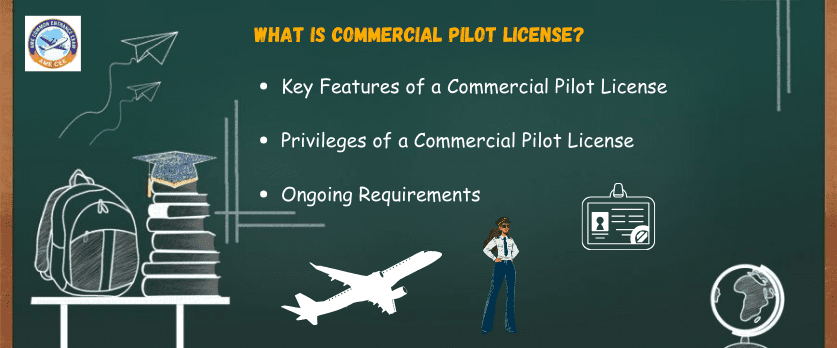A Commercial Pilot License (CPL) is a qualification that allows individuals to act as pilots of aircraft for compensation or hire. This license is a significant milestone for those aspiring to pursue a career as a professional pilot in the commercial aviation industry. The CPL is a step beyond a Private Pilot License (PPL), which permits individuals to fly for recreational purposes.
Key Features of a Commercial Pilot License
Eligibility
To be eligible for a CPL, individuals must typically hold a Private Pilot License, meet specific flight experience requirements, and successfully complete the necessary training.
Training Requirements
CPL training involves both ground school and flight training. Ground school covers subjects such as aviation regulations, navigation, meteorology, and aerodynamics. Flight training includes advanced maneuvers, emergency procedures, and additional cross-country flight experience.
Flight Experience
The flight experience required for a CPL includes a minimum number of flight hours, often ranging from 150 to 250 hours, depending on the aviation authority’s regulations. This includes both solo and dual flight time.
Theory Examinations
Candidates for a CPL must pass a series of theoretical exams covering the subjects taught in ground school. These exams assess a pilot’s knowledge in areas such as air law, navigation, meteorology, and aircraft systems.
Skill Test
After completing the required flight hours and passing the theoretical exams, candidates must undergo a practical skill test with a designated examiner. This test includes demonstrating proficiency in various flight maneuvers, navigation, and emergency procedures.
Medical Certificate
Pilots must hold a valid Class 1 medical certificate to be eligible for a CPL. This certificate is issued after a thorough medical examination by an aviation medical examiner.
Privileges of a Commercial Pilot License
Acting as Pilot in Command (PIC)
CPL holders are authorized to act as Pilot in Command of an aircraft engaged in operations for compensation or hire.
Flying for Airlines
With a CPL, individuals can pursue careers as commercial airline pilots, flying passengers or cargo for scheduled and unscheduled operations.
Instructor Ratings
Many CPL holders choose to obtain additional qualifications, such as Certified Flight Instructor (CFI) or Instrument Rating Instructor (IRI), allowing them to instruct and train other aspiring pilots.
Type Ratings
For those aspiring to fly specific types of aircraft, additional type ratings may be required. These are additional qualifications specific to the make and model of an aircraft.
Ongoing Requirements
Maintaining a CPL involves periodic checks, recurrent training, and meeting currency requirements outlined by aviation authorities. Pilots must also adhere to specific regulations and stay informed about changes in aviation laws and procedures.
Summary
a Commercial Pilot License is a significant achievement for those seeking a career as a professional pilot. It opens the door to a range of opportunities within the aviation industry, from flying for airlines to instructing and pursuing advanced certifications. The path to obtaining a CPL involves a combination of rigorous training, theoretical knowledge, and practical experience, ultimately preparing pilots for the responsibilities and challenges of commercial aviation.
To become an commercial pilot you may could join commercial pilot license through AME COMMON ENTRANCE EXAM (AME CEE) this examination you may join Commercial Pilot License approved by DGCA.


